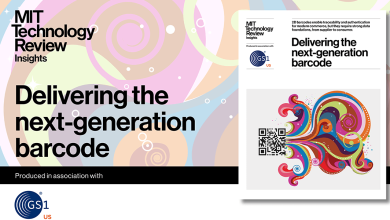‘Cheat Engines’ and Copyright in Video Games in the EU – Communications of the ACM

According to Article 10 paragraph 1 of the TRIPS Agreement and Article 4 of the WIPO Copyright Treaty (WCT), computer programs are subject to copyright as “literary works,” as defined by Article 2 of the Berne Convention. These provisions have established software protection as a subject of intellectual property at the international level. Specifically, in the EU, the protection of computer programs is entrusted (principally[1]) to copyright law under Directive 2009/24/EC[2]. Therefore, the unauthorized reproduction, translation, adaptation, or transformation of a computer program constitutes an infringement of the exclusive rights of the author[3], who is understood to be the programmer[4].
According to Article 1 paragraph 3 of Directive 2009/24/EC, computer programs are considered works if they are “original,” meaning they are the result of the personal intellectual effort of the author. Further, according to paragraphs 1 and 2 of Article 1, the Directive’s protection applies to “any form of expression” of the computer program, including preparatory design materials[5]. This provision aligns with Articles 9 paragraph 2 of TRIPs and 2 WCT, which assert that copyright protection extends to the form of expression of a work, not the underlying ideas, principles, procedures, methods, or mathematical concepts.
In the case of software, it is accepted that the author’s personality is expressed through the written depiction of both the “source” and “object” or “binary” code of each program[6]. The source code includes verbal elements, understandable to the human mind, encoded in a programming language. On the other hand, object code is the source code of the program after it has been compiled into binary machine language (0,1), enabling the computer hardware to execute it. By including preparatory design materials under the concept of a computer program[7], Directive 2009/24/EC extends copyright protection to so-called “pseudocodes” and “flowcharts,” which represent early forms of the algorithm guiding the program’s implementation, in natural language[8] and diagrammatic representations, respectively.
The Court of Justice of the EU (CJEU) has been called upon repeatedly to interpret these provisions. In the “SAS Institute” case, World Programming Ltd. managed to faithfully reproduce the functional capabilities of an SAS analysis program by using the same programming language and data file format. The Court ruled that elements such as functionality, programming language, and data file format are not protected by copyright, as they do not constitute forms of expression of the computer program. Only elements whose copying results in the reproduction or creation of the program itself, at a later stage, fall under this concept. Therefore, it is permissible to observe, study, and test a program to reveal the ideas and principles underlying its operation and reproduce the results of its execution, as long as its code is not copied in whole or in part[9].
Earlier, in case C-393/09, the CJEU ruled the graphical user interface (GUI) displayed on the computer screen during the execution of a program, such as icons, symbols, windows, scroll-down menus, etc., is not a form of expression of the program. According to the Court, the GUI allows users to access the functionalities of the programs without permitting their direct or indirect reproduction. As a result, it does not enjoy the protection provided by Directive 2009/24/EC[10].
A similar issue was addressed in the recent decision C-159/23[11]. This case involves Sony’s PlayStation consoles and games, with Sony alleging its copyright had been infringed by Datel’s “cheat engines.” Datel develops and markets software that installs on PlayStation consoles and allows users to modify Sony’s games, for example, by providing more “lives,” ammunition, money, etc., than each “level” normally offers. According to Sony, this process constitutes a “modification” of the software on which its games are based, as defined in Article 4 of Directive 2009/24/EC. Since it is performed without its permission, it is illegal.
The CJEU found Datel’s additional program does not modify the game’s code on the PlayStation; it only changes the value of the variables[12] entered into the console’s (i.e., the computer’s) RAM during the game’s execution. This content is not protected as a form of expression of the game’s software under Directive 2009/24/EC, as it does not allow for the reproduction or re-creation of the game in any way[13].
With the above content, the commented decision does not significantly contribute to existing case law. Practically, it removes any doubts regarding the legality of cheat engines as programs that alter the difficulty level of games on PlayStation. However, it should be noted that video games consist of complex material that includes not only computer programs but also graphical and audio elements. These have independent creative value[14] and, as long as they are distinguished by originality, are protected by copyright under Directive 2001/29 (InfoSoc)[15]. Therefore, although cheat engines do not infringe on Sony’s copyright in PlayStation games as computer programs, they may still violate its rights concerning other elements of the video game, such as the user interface, music, character figures, etc. In any case, video game elements dictated by technical necessities do not meet the originality requirement[16].
In the proceedings before the CJEU, in case C-159/23, Sony argued that cheat engines alter the values of variables that would have been entered into the PlayStation’s RAM under normal operation of each game’s code; therefore, they infringe the author’s rights as established by Directive 2009/24/EC. However, according to Advocate General Szpunar, although the creator of the code has defined the rules determining the value of the variables during the execution of each video game, this value itself escapes their creative control as it depends on factors that cannot be foreseen in advance, such as player behavior. Consequently, the value of the variables cannot be protected under copyright law. This reasoning also refutes the theories that seek to establish copyright for the programmer in the by-products of creative artificial intelligence, as outputs of a general creative plan[17].
On the occasion of the last observation above, it is worth remembering that the restriction of the programmer’s rights to the verbal content of the source and object code of the program is intended, on the one hand, to protect the authors from “pirated copies” of their programs and, on the other hand, to encourage competition in the software market[18]. However, in the age of machine learning, the evolving capacities of software are shifting the focus of intellectual creation beyond the code itself. From another perspective, technologies such as blockchain applications, based on open-source code, often shared between countless peers[19], indicate a paradigm shift in the field of software development. These developments are good reasons for revisiting, reevaluating, and possibly revising Directive 2009/24/EC.
Eleni Tzoulia is a versatile legal professional with expertise in IT, competition, and intellectual property law, spanning both practice and academia. Her research aims to address emerging legal challenges in the digital age.
References
[1] Patent law protection is not excluded, as long as a program’s technical character can be proved according to Article 52 of the European Patent Convention (EPC). See Tzoulia, The patentability of AI-related subject matter according to the EPC as implemented by the EPO in Kornilakis A, et al (eds), Artificial Intelligence and Normative Challenges: International and Comparative Legal Perspectives, Cham: Springer, pp. 147–169. [2] Directive 2009/24/EC of the European Parliament and of the Council of 23 April 2009 on the legal protection of computer programs, OJ L 111, 5.5.2009, p. 16–22. [3] See rec. 15 and article 4 of Directive 2009/24/ΕC. [4] See article 2 of Directive 2009/24/EC and AG Opinion on C-393/09 of 14.10.2010, I – 13974, paras 50, 63, 73. [5] See also rec. 11. [6] See article 10 TRIPS and C-393/09 of 22.12.2010, Bezpečnostní softwarová asociace — Svaz softwarové ochrany, ECLI:EU:C:2010:816, paras 33-37. [7] See article 1 para. 1 in fine. [8] E.g., « if…then…else …”. [9] C-406/10 of 02.05.2012, SAS Institute Inc., ECLI:EU:C:2012:259, paras 39-41. [10] C-393/09, supra, para. 51. [11] C‑159/23 of 17.10.2024, Sony Computer Entertainment Europe, ECLI:EU:C:2024:887. [12] This refers to data, like the score, the player’s “lives”, or firearms, etc. [13] C-159/23, supra, para. 51. [14] C‑355/12 of 23.01.2014, Nintendo, ECLI:EU:C:2014:25, para. 23. [15] Directive 2001/29/EC of the European Parliament and of the Council of 22 May 2001 on the harmonization of certain aspects of copyright and related rights in the information society, OJ L 167, 22.6.2001, p. 10–19. [16] C-393/09, supra, para. 44-50. [17] See Hugenholtz & Quintais, Copyright and Artificial Creation: Does EU Copyright Law Protect AI-Assisted Output?, IIC 2021, pp. 1190-1216, 1200, “general authorial intent”. [18] See AG Opinion on C-159/23, supra, para. 41. [19] See Tzoulia, The blockchain ecosystem in the light of intellectual property law, JIPITEC 13 (3) 2022, pp. 290-301.



